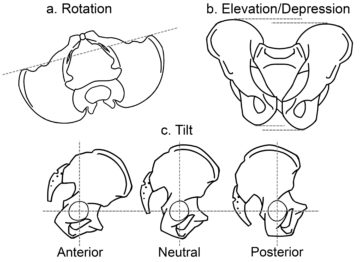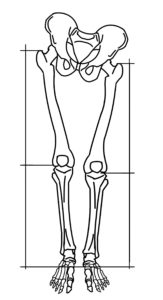Considerations for Leg Length Discrepancies
Jun 14, 2017
Please enjoy an excerpt from my book, Winning the Injury Game, available on Amazon.
Clients often tell me their legs are different lengths. When they lay down on an examiner’s table, one leg appears longer, and the practitioner informs them that their legs are different lengths. Or perhaps they have been told this by the tailor when having their pants hemmed. Some clients have been given lifts to put in their shoes to correct the imbalance. Early in my therapy, I was given such an insert. It made my pain worse! I quickly removed the offending piece of foam. Adding a lift to my shoe to reinforce my asymmetry never made sense to me. Are my legs really different lengths? Should I be perpetuating this imbalance by placing a lift in my shoe? Wouldn't it be better to correct the discrepancy?
It is rare for the leg bones to be uneven.1 In my experience, leg length discrepancies without birth defects, leg breaks or surgery are NOT the result of different length bones, called “actual leg length”2 discrepancies. Rather, what I see more commonly are “apparent leg length”2 discrepancies, where the bones are the same length but appear shorter or longer because of muscle imbalances and asymmetries in the hips and pelvis.

Figure 6-7. There are three asymmetries of the pelvis—(a) left/right rotation, (b) elevation/depression and (c) anterior/posterior tilt.
| As noted earlier, the pelvis can become out of alignment in three dimensions (Figure 6-7), which changes the hip's position within the pelvis and the orientation of the soft tissues. Hips can move within the socket—up, down, forward and backward. If the pelvis is asymmetrical and the hip position shifts in the socket, it could make the leg appear shorter or longer.3 Review my posture in Figure 6-2. Viewing my elevated right hip bone, you might assume that my right leg is longer. If, however, my right hip were positioned farther down in the socket (healthy alignment), away from the acetabular cartilage, while the left was pushed up into the socket (unhealthy alignment), in contact with the acetabulum—creating the hole—the leg bones could still be the same length, even though the right leg appears longer, and the left leg appears shorter. In this case, it might be helpful to view the left hip bone as depressed rather than the right hip bone as elevated. This pelvis and hip asymmetry can be perceived as a leg length discrepancy, as shown in Figure 6-12. Treating this unbalanced position with a lift was not going to fix the underlying problem: my hip and pelvis misalignments. |  Figure 6-2. Many postural asymmetries can be seen in the back view of my posture; the main ones are highlighted. Figure 6-2. Many postural asymmetries can be seen in the back view of my posture; the main ones are highlighted. |
 Figure 6-12. An asymmetrical pelvis can create the appearance of a leg length discrepancy when hip orientation within the socket changes.
Figure 6-12. An asymmetrical pelvis can create the appearance of a leg length discrepancy when hip orientation within the socket changes.
- Egoscue, P. (2001). The Egoscue Method of Health Through Motion: A Revolutionary Program That Lets You Rediscover the Body's Power to Protect and Rejuvenate Itself. New York, NY: Quill.
- Kendall, F. & McCreary, E. & Provance, P. & Rodgers, M. & Romani, W. (2005). Muscles: Testing and Function With Posture and Pain (5th ed.). Baltimore, MD: Lippincott Williams & Wilkins.
- Postural Restoration Institute® (PRI). (2014). Myokinematic Restoration Course: An Integrated Approach to Treatment of Patterned Lumbo-Pelvic-Femoral Pathomechanics. Lincoln, NE: Postural Restoration Institute® (PRI).
Stay connected with news and updates!
Join our mailing list to receive the latest news and updates from me.
Don't worry, your information will not be shared.
We hate SPAM. We will never sell your information, for any reason.

